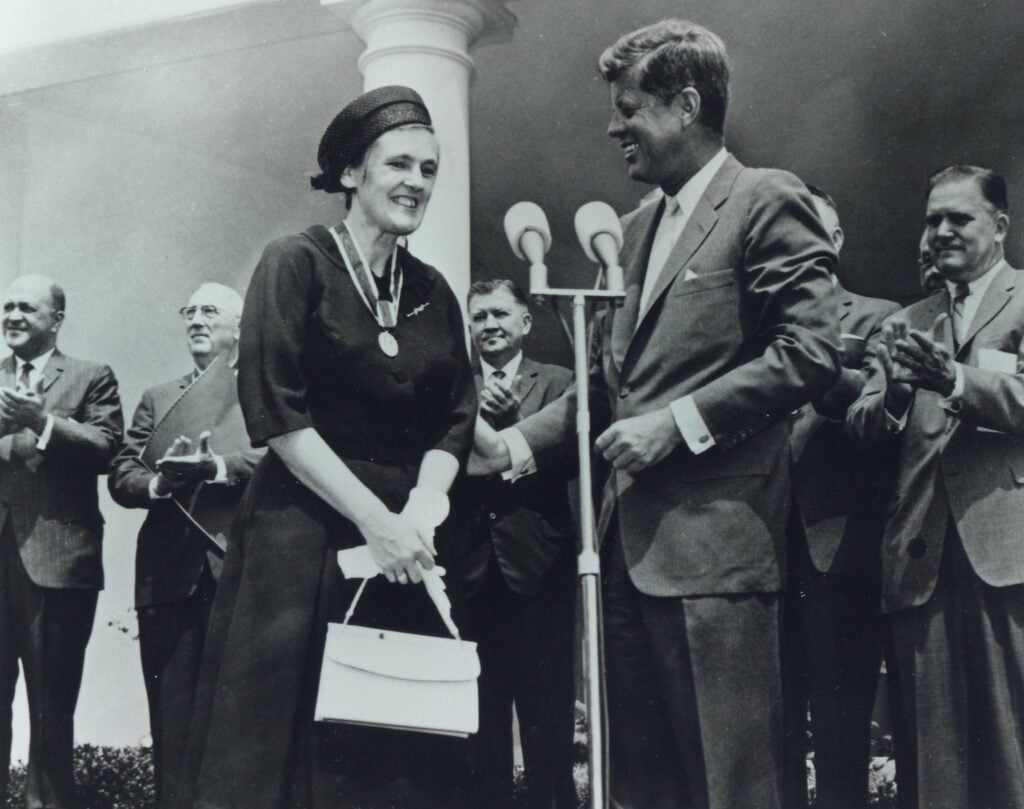Frances Kathleen Oldham Kelsey was a Canadian-American physician and pharmacologist. She played a vital role in the pharmaceutical scene. But did you know how she prevented the occurrence of several childbirth defects?
Frances Kathleen Oldham Kelsey, an FDA drug reviewer, refused to allow Thalidomide to be sold, thereby preventing numerous birth defects. John F. Kennedy presented her with the President’s Award for Distinguished Federal Civilian Service.
How Did Frances Kathleen Oldham Kelsey Help Her Community?
The auditorium at the FDA’s headquarters was alive with activity. It was an opportunity for the FDA’s massed ranks to mark a watershed moment in the agency’s history. The central figure in a case that changed the face of drug regulation was returning to the FDA nearly half a century later.
Frances Oldham Kelsey, MD, PhD, then 96 and frail, was escorted to the event by her two daughters. As FDA officials honored her with speeches before presenting her with the Dr. Frances O. Kelsey Award for Excellence and Courage in Public Health Protection, she was beaming.
It was pretty moving.
John Swann, FDA Historian
From September 1960 to November 1961, Kelsey and a small group of FDA colleagues were the only things standing between the country and the drug thalidomide, which caused massive birth defects and fetal deaths worldwide. The drug was available in over 20 countries, including the United Kingdom and Germany, where it was used to treat morning sickness in pregnant women.
Kelsey, who died in 2015 at the age of 101, was a key figure in what Swann described as the FDA’s most impactful near-miss, a drama in which the University of Chicago played a significant role.
Kelsey had studied at the University and later joined the faculty, where she met her future husband, F. Ellis Kelsey, PhD, another critical figure in the thalidomide case. Eugene Geiling, MD, Ph.D., a renowned scientist at the University, mentored Kelsey and brought her to the agency. Geiling was among the University of Chicago alumni and faculty who helped shape drug policy.
While attending university, Kelsey first became aware of the dangers of lax drug oversight. As a graduate student in 1937, she was involved in another landmark drug regulation case of the twentieth century that sparked an earlier round of regulatory reform. She gave the FDA the powers Kelsey would wield to such effect over two decades later. (Source: University of Chicago, College of Medicine)
The Call for National Emergency
Kelsey arrived in Chicago during a national emergency. The FDA was scrambling to seize S supplies. E. Massengill Co.’s elixir sulfanilamide is a widely prescribed medicine for colds and other infections linked to an increasing national death toll.
Kelsey was assigned to Geiling’s team to identify the toxic agent. The culprit was diethylene glycol, used as a solvent in the preparation. It is now best known as the active ingredient in antifreeze.
The scandal exposed the shortcomings of existing regulations. Massengill failed to conduct toxicology testing on a drug that had claimed 107 lives. Still, the only legal infraction was billing the product as an elixir, a term reserved for alcohol-based solutions.
The case prompted legislation in 1938 requiring companies to apply with the FDA before releasing a new drug to the public. If the agency was not convinced that the drug was safe, it had 60 days to reject the application. (Source: University of Chicago, College of Medicine)
